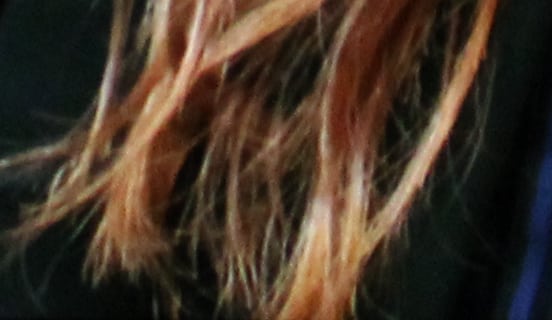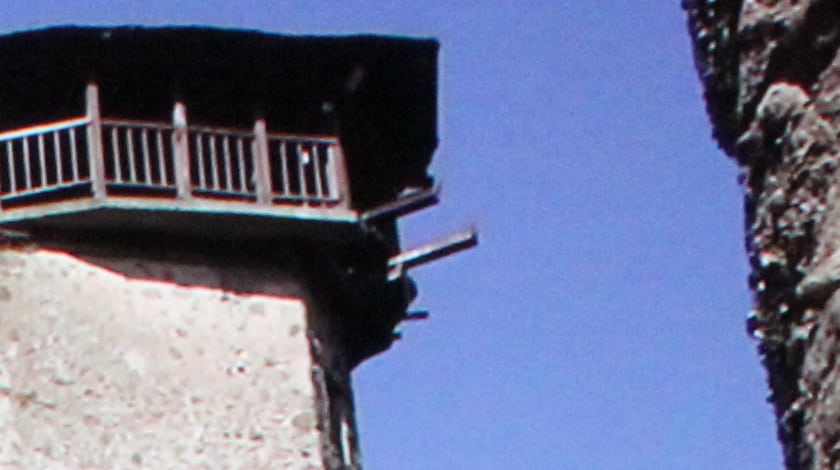4K/UHD Support
JVC was the first company to release projectors that are use 1080p display chips combined with pixel shifting* (see below) to produce what I like to call a 4K-lite image. While the apparent pixel density displayed on the screen is similar to a native 4K projector there is only approximately 4 Million unique pixels being displayed, instead of the 8 Mpixels with a native 4K image. The previous generation of JVC projectors could only accept certain types of 4K content due in part to those projectors only being equipped with HDMI 1.4 inputs and with a older version of the HDCP copy protection. The new generation of JVC projectors, including the DLA-RS600, have corrected this situation and now supporting the very latest version of HDMI (i.e, version 2.0a) and HDCP (version 2.2) and can now accept the most demanding 4K/UHD signals allowed over the HDMI 2.0 interface. This is intended to make these new JVC projector compatible with 4K/UHD content from the upcoming Ultra HD Blu-ray players as well the current and upcoming 4K steaming players (e.g., Roku 4 or Nvidia Shield) as well as satellite and cable TV 4K/UHD set-top-boxes coming within the next year or two.
I tested the RS600 using a Roku 4, which uses/requires HDMI 2.0 and HDCP 2.2 and found that it worked without any significant issues when connected to the RS600. I operated the Roku 4 while outputting 4K/UHD video in 2160p @ 60Hz and 8-bit color depth (per each red, blue and green primary colors) and also at 2160p @ 24Hz and 30Hz with 10-bit color depth. I plan to provide a future update to this review once the Ultra HD Blu-ray players and discs are released and I have had a chance to further evaluate the RS600's capabilities for supporting UHD video using such advanced features as wide color gamut and high dynamic range.
The above photo gallery includes 3 screen shots from 4K video streaming programming delivered via a Roku 4. The 1st photo (greatly down scaled in resolution for posting here) is from Mozart in the Jungle from Amazon and the 2nd photo is a blow-up from a small area within the 1st photo. The 3rd photo is the full frame from a YouTube video on Meteora, Greece and the 4th is a blow-up of a portion of the 3rd. The 5th and 6th photos are full frame and blow-ups from the same video on Meteora, Greece. I must point out that the on-screen images appeared better when viewed in person than I was able to capture in these screen shots.
e-Shift4 Pixel Shifting
As the 4 would indicate, this is JVC’s 4th generation of the pixel shifting feature in their projectors. We previously reviewed two JVC projectors with e-Shift3. The first one was their RS4910U/RS49U (JVC's 2014-2015 entry-level models with e-Shift3), a most impressive projector for the approx. $5,000 MSRP, and their previous flagship model RS6710U/RS67U, which received our "Best in Class" award. When e-Shift is turned off the RS600U becomes as conventional 1080p projector. I offer the follow simplified description of what happens when e-shift is turned on and for the case where a HD (e.g., 1080p) signal is input:
- upscale the original HD image to UHD 2160p; then
- sub-sample and process the 2160p, 8 Mpixel image to create a 4 Mpixel video frame (single image); then
- display the 4 Mpixel frame as two sequential 1080p (i.e., with 2 Mpixels each) sub-frames where the 2nd sub-frame is shifted diagonally by 1/2 pixel width and height. With this approach, the pixels in this 2nd sub-frame contains different, and unique, information from the pixels in the first sub-frame.
In the above example we are starting with a HD video input signal so in this context e-shift can be considered as a form of video enhancement. However, as with all forms of video enhancement no amount of video processing can create valid new information beyond what is contained in the original signal. Rather, the video processing is able to emphasize, or more clearly display, certain of the information already present in the original HD image. This is true whether the display has native 4K/UHD resolution or the pixel shifting technique used by JVC. So when the input signal is HD then the resulting displayed picture will be enhanced HD and not offer the true 4K/UHD level of picture detail. However, when the input signal is true 4K/UHD resolution things get more interesting as the RS600 can skip step 1 above and simply apply processing to perform the functions described in steps 2 and 3. In this case you end up with an image with about 4 million pixels that carry information rather than the 8 Mpixels that a native 4K/UHD projector would be able to display. So ultimately the ability of the RS600 to resolve fine details in the projected image is less than for a native 4K/UHD projector, but greater than for a 1080p (with it's 2 Mpixel limitation) projector. This new generation of e-Shift (i.e., e-Shift4) used in the RS600U along with other improved image enhancement processing capabilities does appear to offer an evolutionary improvement in perceived image resolution as compared to JVC's prior generations of e-Shift.
3D
As with the past few generations of JVC projectors (starting with the RS40, RS50 and RS60 series) the new generation of JVC projectors for 2016 also support 3D. The "frame packing" 3D signal format, as used by Blu-ray 3D, is supported as well as the lower resolution side-by-side and top-bottom 3D formats. The JVC projectors require the attachment of an external 3D sync. emitter and neither the 3D emitter nor 3D glasses are included with the projector. Rather these are offered as extra cost accessories.
Its been a couple of years since JVC switched over from using IR based 3D emitters and 3D active shutter glasses to ones using a radio frequency (rf) sync. signal. JVC uses industry standards for the 3D sync. and this opens the door to using other than JVC branded 3D emitters and 3D glasses. The only word of caution is JVC projectors project their light with horizontal polarization while LCD flat panel TVs and other brands of 3LCD and LCoS projectors use vertical polarization. As a result 3D glasses that are not made specifically for use with JVC projectors will have the 'wrong' polarization. This makes no difference if your projection screen does not retain the polarization of the light, but if it does retain any significant polarization, then the projected 3D image will appear dimmer when viewed through 3D glasses with the wrong polarization. My low gain matte surface screen does not retain a significant level of polarization, so I was able to use my existing non-JVC 3D glasses without any noticeable dimming of the image, even though those glasses had the 'wrong' polarization.
Lens Memory
If you have, or are planning to use, a typical 16:9 aspect ratio projector screen (same shape as HDTV), then Lens Memory isn’t something you’ll probably be using (at least not normally). But, if you are really into watching movies, and prefer a widescreen approach – you know – like Cinemascope – in the theaters - with a much wider image relative to height, then Lens Memory is the magic bullet that let’s you buy one of those “wide” screens, so you don’t have to deal with letter boxes/black bars above and below the picture. These 'scope' screen typically have an aspect ration of between 2:35:1 up to 2.40:1 as compared the normal HDTV aspect ratio of 1.78:1.
Home theater owners using a 'scope' screen have two alternatives for changing the aspect ratio of the projected image. The older, conventional approach, is to use an external anamorphic lens that stretches the image in the horizontal direction then use video processing, either within the projector, if it supports it (the RS600U does), or with via an external video processor to electronically apply a vertical stretch to the image. This approach is both rather complex as well as expensive. The lower cost and more convenient approach is to use a projector with lens memory (or far less convenient would be to manually adjust the zoom, focus and lens shift every time you want to change the aspect ratio of the projected image). The JVC RS600U will save up to 10 lens memory settings and you can assign a name for each setting. The Zoom, Focus and Lens Shift setting will be stored for each entry in the lens memory. While the RS600U is reasonably good to returning the projected image to the previously stored location on the screen, some small offsets from the original location may occur for which my may need to occasionally use the power lens adjustment to correct. This is typical for projectors with the lens shift feature, regardless of brand or model.







